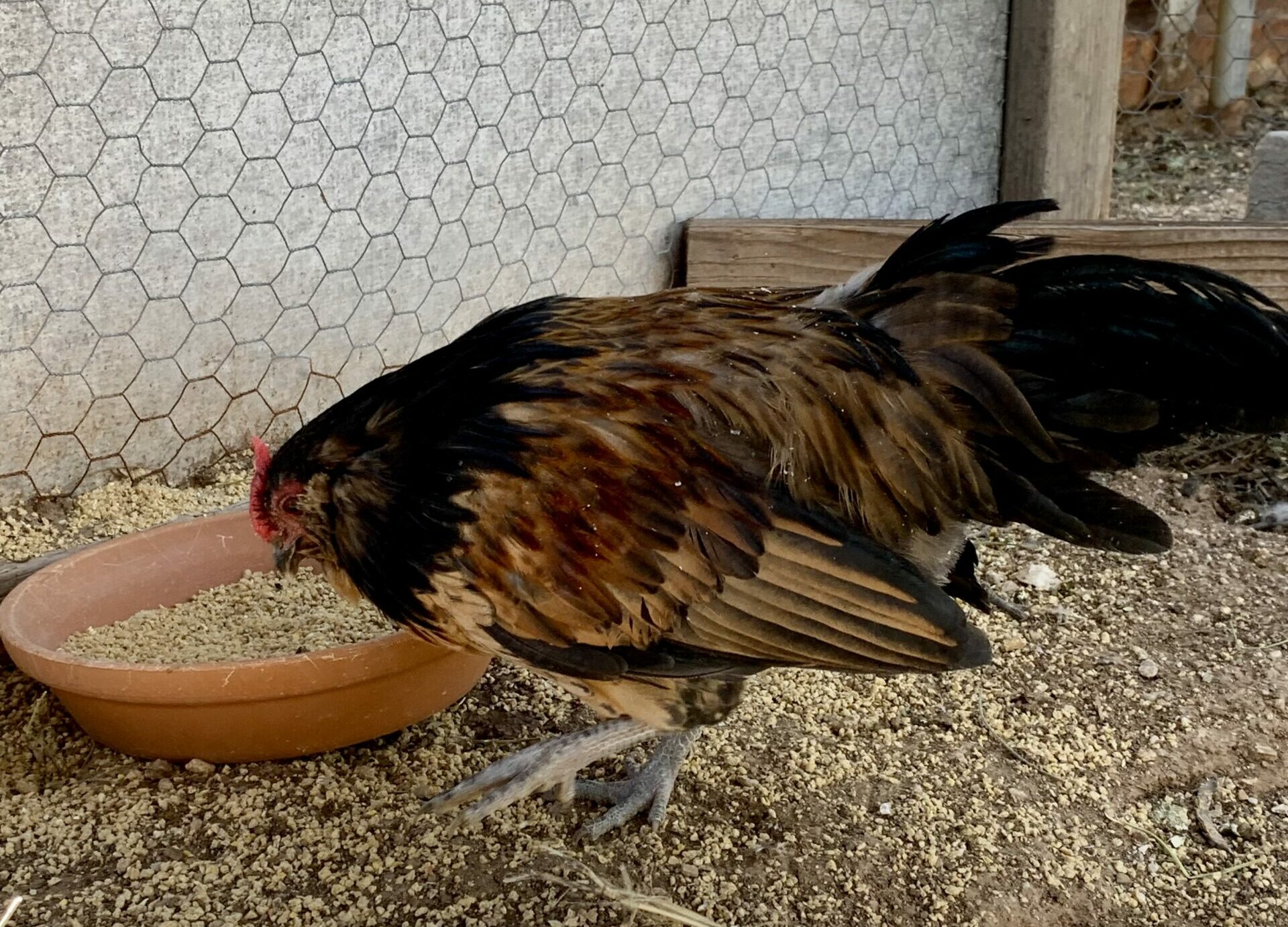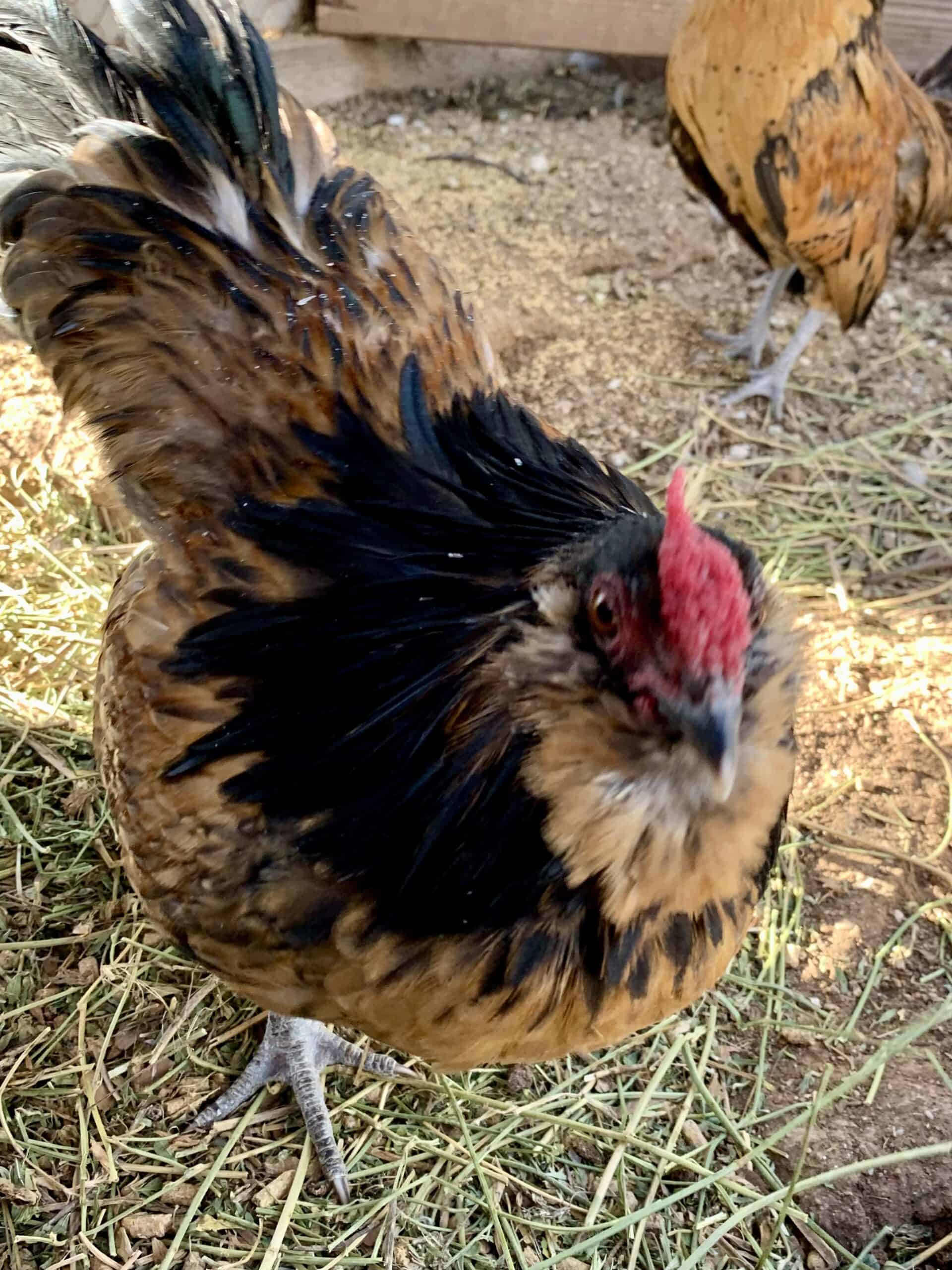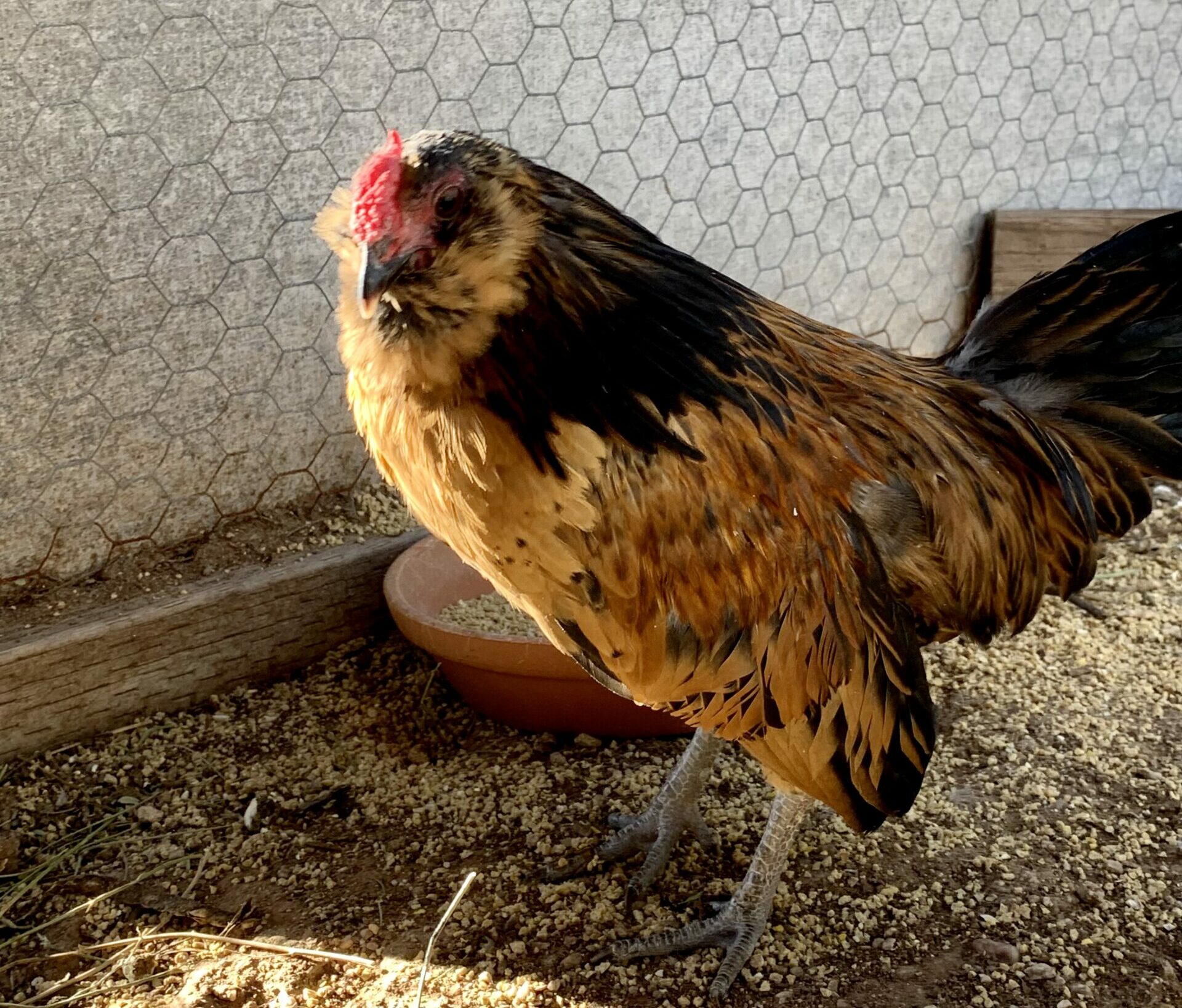My friend is raising Belgian Bearded d’Anver chickens and roosters. They are a true bantam breed. This means there are no full-sized counterpart. People raise d’Anvers for exhibition (4H, FAA, etc.) and as ornamental birds.
Being smaller than standard-sized hens, they are ideal for small backyards. They also can make good pets because they are friendly.
They lay very small eggs so that can be seen as a value add. Backyard chicken owners do not use them for meat as only they weigh up to around 1.5 pounds (700 grams).
Keep reading and check out the video of my friend’s Belgian Bearded d’Anver roosters below. They are chatty!
Belgian Bearded d’Anver Chickens
According to Poultrykeeper, in Britain, there are five standardized varieties of Bearded Belgian bantams. One of them is the Belgian Bearded d’Anver chicken, also called the Barbu d’Anvers, which is what I will be discussing here.
The other standard varieties are Barbu d’Uccle, Barbu d’Everberg, Barbu de Grubbe, and Barbu de Watermael.
In French, “Barbu” means bearded. Each is bearded (“barbu”) and after the d’ is the city in Belgium they originated from. Therefore, Barbu d’Anver chickens originated the city Anvers in Belgium.
Another name for them is Antwerp Belgian chickens.
Purpose for Raising
Many people raise them as pets and for ornamental reasons. Some raise them to exhibit them in shows.
They will lay eggs but they are bantam-small. Their eggs ivory and creamy white.
The hens will sit on their eggs and make good mothers. This means, if you raise them with a rooster, they can hatch chicks. This can be a way to continue to have a sustainable flock.
Personality and Behavior
They can be chatty. Belgian Bearded d’Anver roosters can be loud.
Typically, these chickens are friendly and get along with other mild-tempered breeds. The roosters will work hard to protect their flock. Some may be aggressive but generally they aren’t.

Care
If you keep a rooster with your Barbu d’Anvers hens, be sure to have at least 8 – 10 to minimize stress among the hens.
Chickens are social. Raise at least two chickens together.
Like other bantam chickens, they do well in smaller spaces which makes them appealing to those with smaller backyards. They need around 1 – 2 square feet per bantam chicken and a minimum of 3 – 4 square feet per bantam for a chicken run or other outdoor space.
They will enjoy foraging and will benefit from fresh air and sunshine. Having an area for them to take dust baths will also help keep them clean and support their natural instincts and habits.
Being smaller than standard chickens, they will eat less. However, they need nutritious food and fresh, clean water.
A big consideration is keeping them safe. Chickens are easy prey for all sorts of wildlife. However, bantams, being smaller, and even easier targets. Keep them protected at night in a secure coop with hardware cloth. When letting them out in the daytime, try to keep them protected in an enclosed space when left alone.
Winter Care
Keep them warm and dry in the colder months. Be sure to observe them (appearance and behavior) each day. Don’t let them walk on snow or ice. They need a well-ventilated shelter that’s draft free. Use chicken bedding to help insulate.
Even if they can’t go outside because of the cold, you should still provide a space for them have dust baths. You can fill a wood or metal box or a kiddie pool with 3 – 4 inches of wood ash, clean sand, or combination.
Appearance
These small, ornamental chickens have clean legs and bearded, feathery faces. Some colors are: Blue, white, porcelain, black, black mottled, cuckoo, and lavender.

Advantages to Raising Antwerp Belgians
- Friendly, make good pets
- Ornamental
- Require less space
- Eat less chicken feed
- Lay very small white eggs
- Do well in confinement
- Ideal for urban areas and small backyards
- Strong community of bantam chicken owners
They are a true bantam breed. They are fun to raise and usually good with children. Learn lots more about chicken breeds, including these bantam chickens:
- Golden Sebright Bantam chicken
- Serama chicken
- Silkie chickens
- Black Silkie chicken
- Blue Silkie chicken
References:
Featured image credit: Dawn Head

